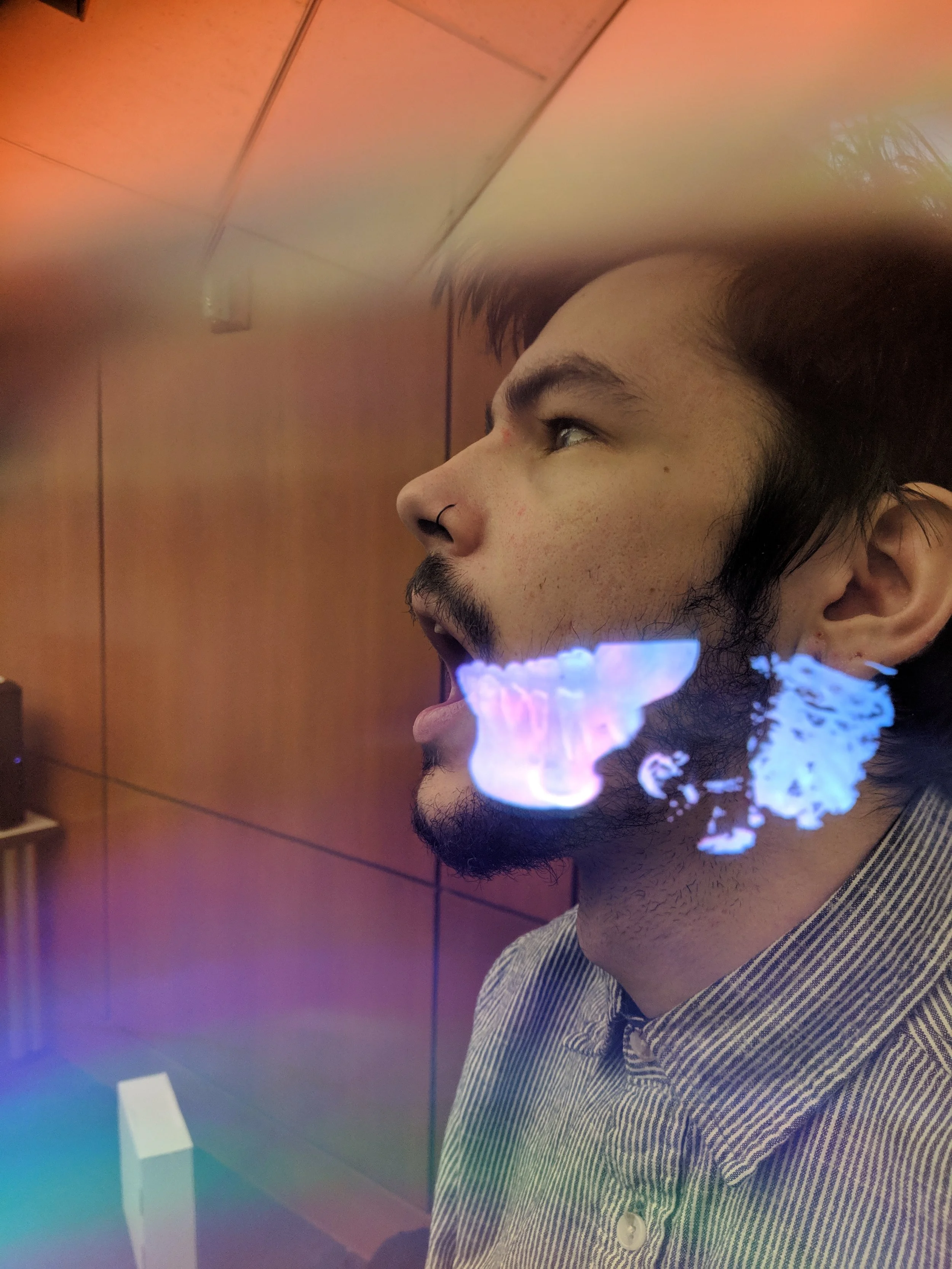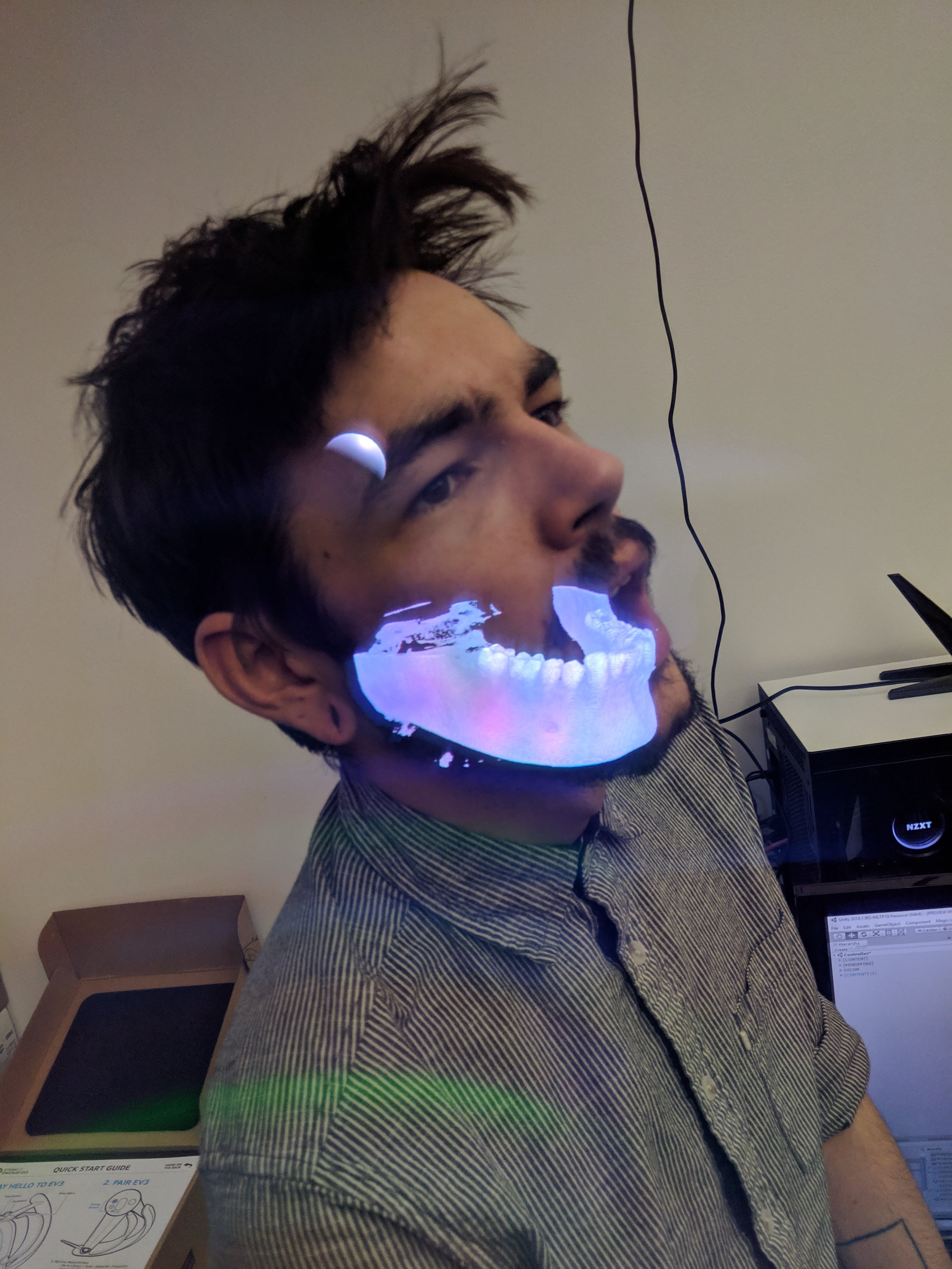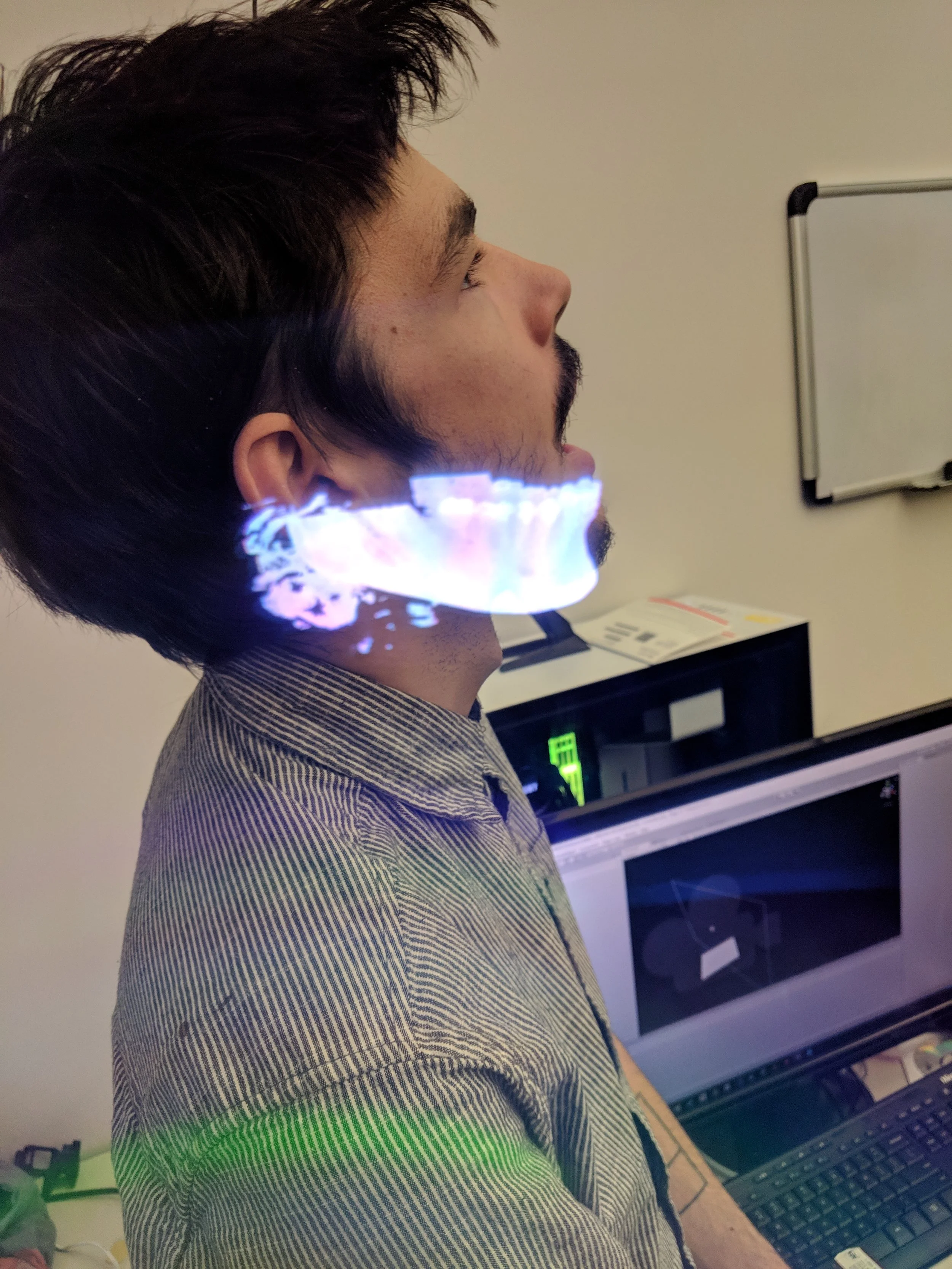Dental AR Implants
This project was by request of a few surgeons at the University of Utah. They wanted to know if AR headsets would be able to not only be used for training but be used in practice. In this project I designed, and printed a few mounting brackets that would lock into a patients teeth, these brackets are then in place when a CBCT scan is done of the patient. That CBCT data is then aligned to the patient using these mounting brackets as reference. The surgeon then wears a magic leap AR headset and uses hand tracking (to maintain sterile fields they can’t touch anything) to do live cross sections of the patients scan as it overlays on top of them.
This was used in a real surgery and was a success. An implant was placed in the patient and was validated accurate with later scans. This process included cutting away soft tissue, drilling into bone, placing the bone mounted implant and closing everything back up. This project is still in development and won’t be submitted for publication for another few years.
Hand tracking cross sections of CBCT anatomy.
In this video you can see that where my hand moves it is using some shader code to give me live cross sections of the scans that are loaded in. This video was an early testing video and you can still see a number of debugging items in the scene including the hand tracking joint placements and extra information on how to test the system.





